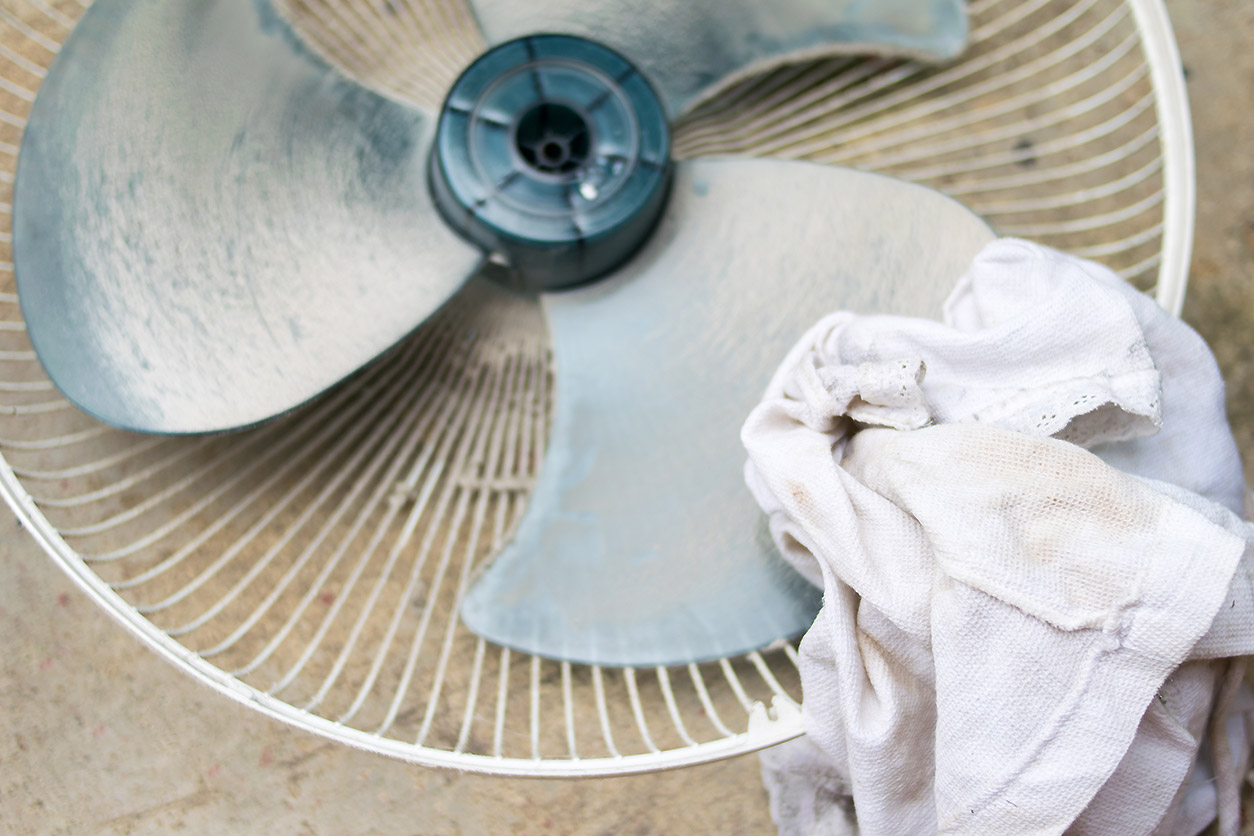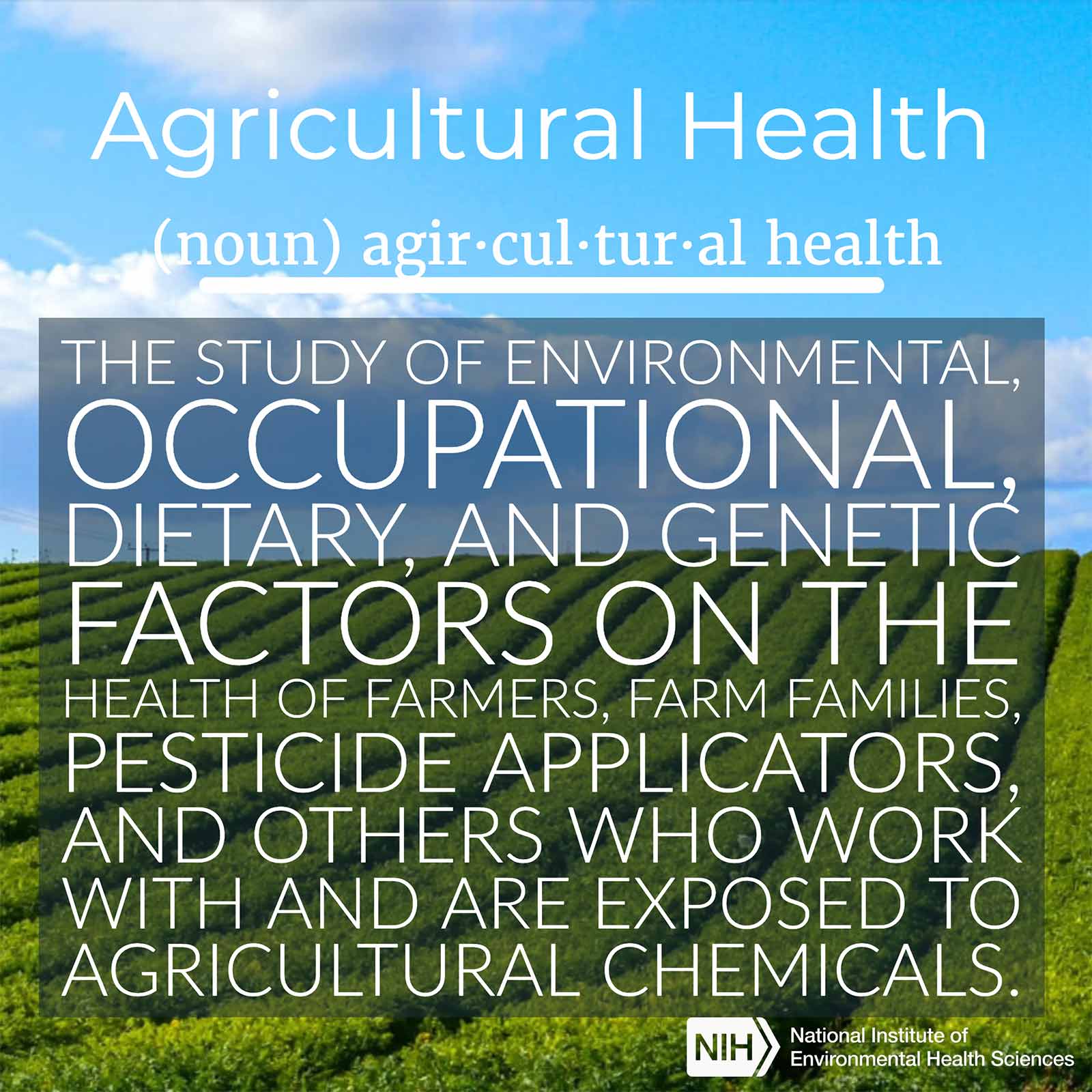A greater variety of microbes in house dust was associated with lower risk of allergic diseases in U.S. farmers and their spouses, according to a new study by NIEHS researchers. The findings, published June 29 in the Journal of Allergy and Clinical Immunology, could lead to new therapies based on the types of bacteria identified.
“Lower microbial diversity in house dust has been associated with [increased] allergic diseases in children, but whether these relationships are present in adults had been unclear,” said senior study author Stephanie London, M.D., Dr.P.H., deputy chief of the NIEHS Epidemiology Branch. “To our knowledge, ours is the first large-scale house dust microbiome study to examine associations of indoor bacterial communities with adult allergy outcomes using a high-throughput sequencing method.”
 “Our study suggests similar associations between indoor microbiota and allergy in adults [as those previously shown in children]; whether these associations are causal remains unknown,” the authors wrote.
“Our study suggests similar associations between indoor microbiota and allergy in adults [as those previously shown in children]; whether these associations are causal remains unknown,” the authors wrote.The dark side of good hygiene
Allergic diseases such as asthma are global public health concerns, affecting 25 million people in the United States alone. Exposure to bacterial communities inside homes can influence health outcomes for these diseases (see sidebar).
- Asthma is a long-term condition that can cause the airways in the lungs to become inflamed and narrow.
- Atopy is typically associated with heightened immune responses to substances that commonly cause allergic reactions.
- Hay fever is triggered by pollen from trees, weeds, and grasses.
London and her team reported that people affected by atopy or hay fever lived in households with lower bacterial diversity. This result is consistent with the hygiene hypothesis, which predicts that childhood exposure to less diverse bacterial communities leads to greater likelihood of having allergic diseases.
 In recent years, Lee has found that environmental factors play a role in bacterial communities in house dust, and air pollution and smoking may cause adverse health effects by turning certain genes on or off. (Photo courtesy of Steve McCaw)
In recent years, Lee has found that environmental factors play a role in bacterial communities in house dust, and air pollution and smoking may cause adverse health effects by turning certain genes on or off. (Photo courtesy of Steve McCaw)“The findings extend our understanding of the relationship between house dust microbiota and allergy outcomes from children to adults, suggesting that chronic exposure to microbes in house dust influences allergy health outcomes across the life course,” said first author Mi Kyeong Lee, Ph.D., from the NIEHS Genetics, Environment & Respiratory Disease Group.
More is not always better
The levels of different types of bacteria also varied across households depending on the presence of allergic diseases. Several taxa from the phylum Firmicutes were less abundant in the homes of people with atopy, hay fever, or poorly controlled asthma. By contrast, bacteria from the Cyanobacteria, Bacteroidetes, and Fusobacteria phyla were more abundant in the homes of people affected by atopy, hay fever, or asthma.
“It is important to note that our findings do not prove that bacteria directly cause allergic diseases,” London said.
“Future studies are needed to look at how the timing of exposure to indoor microbes influences asthma and allergy and to investigate the mechanisms underlying allergic diseases and the hygiene hypothesis,” London added.
“These new findings may suggest that microbes in our homes are in constant interaction with our immune system and can influence the persistence of atopy across the life span,” said Stavros Garantziotis, M.D., director of the NIEHS Clinical Research Unit. Garantziotis directs a clinical study at NIEHS on asthma (see second sidebar).
Farm families join study
 As a senior investigator at the NIEHS for nearly 25 years, London has studied how environmental and genetic factors contribute to various respiratory conditions. (Photo courtesy of Steve McCaw)
As a senior investigator at the NIEHS for nearly 25 years, London has studied how environmental and genetic factors contribute to various respiratory conditions. (Photo courtesy of Steve McCaw)London and her collaborators examined samples of vacuum cleaner dust from the homes of 879 participants in the Agricultural Lung Health Study, which is part of the Agricultural Health Study (AHS). Researchers used questionnaires and blood samples to assess asthma, atopy, and hay fever among farmers and their spouses in Iowa and North Carolina.
AHS began in 1993 with the goal of answering important questions about how agricultural, lifestyle, and genetic factors affect the health of farming populations. The study is a collaborative effort among NIEHS, the National Cancer Institute, the U.S. Environmental Protection Agency, and the National Institute for Occupational Safety and Health.
Citation: Lee MK, Wyss AB, Carnes MU, Richards M, Parks CG, Beane Freeman LE, Thorne PS, Umbach DM, Azcarate-Peril MA, Peddada SD, London SJ. 2020. House dust microbiota in relation to adult asthma and atopy in a US farming population. J Allergy Clin Immunol; doi:10.1016/j.jaci.2020.06.013.
(Janelle Weaver, Ph.D., is a contract writer for the NIEHS Office of Communications and Public Liaison.)










